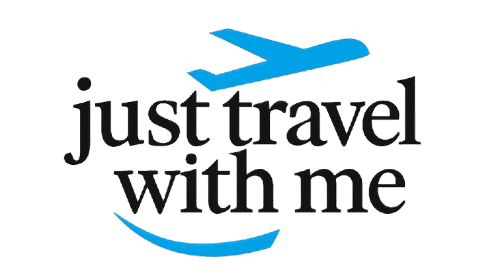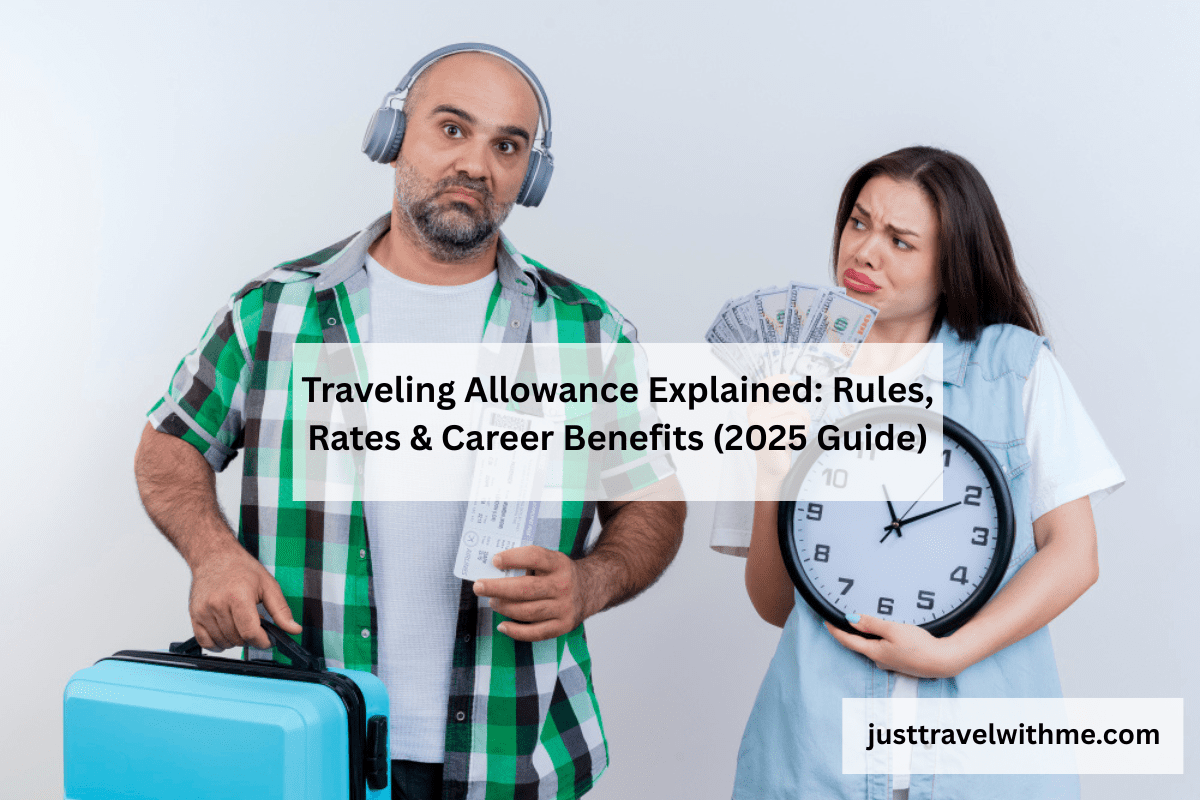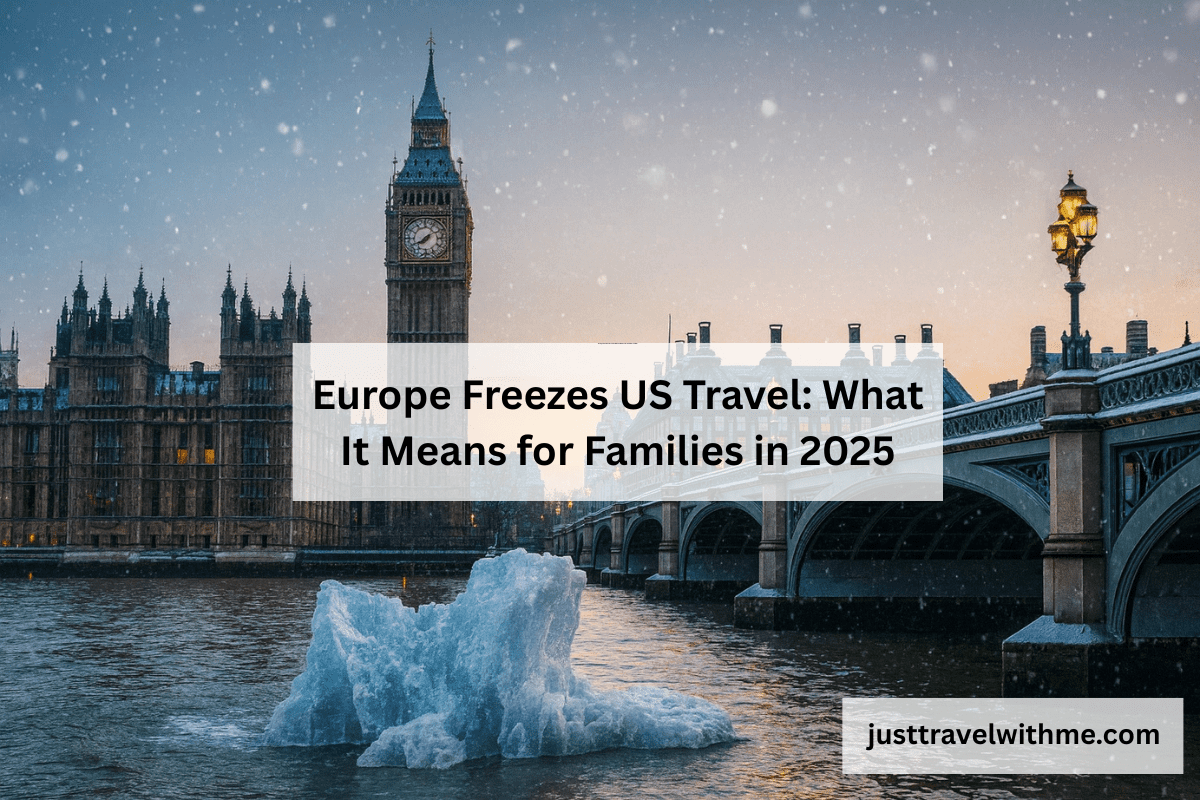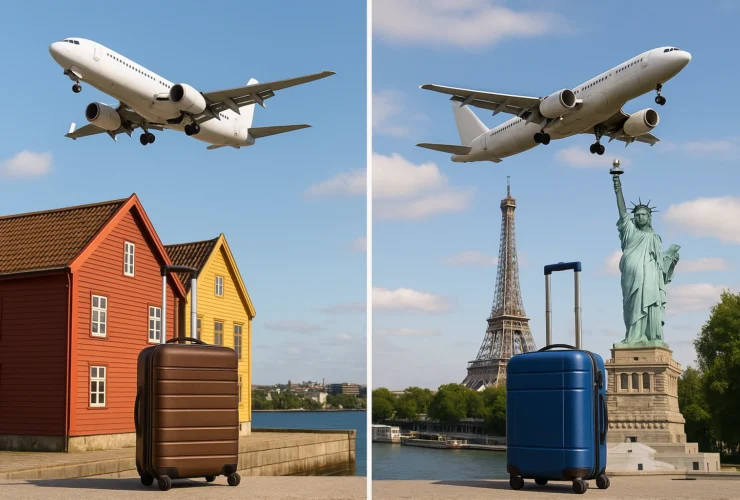If you love traveling as much as I do, you probably know how exciting it feels to hit the road for work or adventure — but travel can also be expensive. That’s where a traveling allowance comes in. It’s a financial benefit that helps cover the costs of your trips — whether it’s business-related, official duty, or even a special assignment away from home.
In simple words, a travel allowance is the amount of money employers or organizations give to employees to manage their travel expenses. These can include transportation, meals, lodging, and other essentials you need while away from your regular workplace. It ensures that travel doesn’t burn a hole in your pocket while you’re doing your job efficiently.
In today’s world, where professionals are more mobile than ever — from remote field workers to international consultants — understanding travel allowances has become more important than before. The rules and rates may differ from company to company or country to country, but the goal remains the same: to make work-related travel smooth and fair.
In this complete guide, you’ll learn everything about traveling allowance — from rules and rates to eligibility, best practices, and even career paths that let you explore the world. I’ll also share some expert insights and real-world advice to help you understand how to claim, manage, or make the most out of your travel allowance.
1. Traveling Allowance: Definition & Core Concepts
1.1 What Is a Traveling Allowance? / Traveling Allowance Meaning
A traveling allowance is the money an organization gives to employees to cover the cost of travel done for official work. It can include expenses like transportation, lodging, meals, or any other costs that occur while working away from your regular office or hometown.
In simpler words, if your job requires you to travel — whether it’s a short business trip or a long field assignment — your employer pays you a travel allowance so that the travel expenses don’t come out of your own pocket. It’s a fair and practical way for companies to support employees who travel for business purposes.
Traveling allowances are not just about comfort — they ensure equality and financial balance among employees. A junior staff member traveling for work shouldn’t have to spend more than they earn just to complete official duties.
1.2 Differences: Travel Allowance vs Per Diem vs Reimbursement
These three terms are often used together, but they have slightly different meanings:
- Travel Allowance: A fixed amount paid to an employee to cover overall travel costs. It may include transport, meals, and stay.
- Per Diem: Latin for “per day,” this is a daily allowance given to employees for food, lodging, and other daily travel expenses.
- Reimbursement: Instead of receiving a fixed allowance, the employee pays for the travel first, keeps the receipts, and gets reimbursed later.
In short — travel allowance is usually pre-paid or fixed; per diem is a daily rate; and reimbursement happens after travel when expenses are proven with bills.
1.3 When and Why Employers Adopt Travel Allowances
Companies adopt traveling allowances to make business travel organized, transparent, and stress-free. Here’s why it’s beneficial:
- Fairness and Transparency: Every employee knows exactly what they’re entitled to.
- Motivation and Comfort: Employees feel valued and supported when the company takes care of their travel expenses.
- Ease of Accounting: Fixed or rule-based allowances simplify record-keeping and tax compliance.
- Improved Productivity: When employees aren’t worried about costs, they can focus more on their work.
Many employers, especially in industries like consulting, construction, sales, and logistics, use travel allowances because travel is a core part of the job.
1.4 Key Terms to Know
Before we go deeper, here are some key words you’ll often see in travel allowance policies:
- Allowance: A fixed amount of money paid to cover specific needs, such as travel or meals.
- Per Diem: A daily rate provided for food, accommodation, and minor expenses.
- Mileage Allowance: Payment based on distance traveled, usually when you use your own vehicle for official travel.
- Subsistence Allowance: Covers meals, lodging, and basic living costs while traveling.
- Incidental Expenses: Small, additional costs like parking, tolls, or tips that occur during travel.
Understanding these terms helps you read and interpret any company’s travel policy more easily.
2. Types & Models of Traveling Allowance
Traveling allowances can vary depending on company policy, type of job, and distance of travel. Understanding each model helps you know what to expect from your organization — and how to plan your expenses wisely.
2.1 Fixed Allowance (Lump Sum)
A fixed traveling allowance is a set amount paid in advance or monthly, regardless of how often or how far you travel. It’s simple and predictable — no need to collect bills or submit receipts every time.
For example, a company might pay a field executive $200 per month as a fixed travel allowance to cover fuel, meals, or transport. It saves time and ensures regular support. However, if your travel varies a lot, this model might not always cover your real costs.
2.2 Daily / Per Diem Allowance
A per diem or daily allowance means you get paid a fixed amount for each day you travel for work. This usually covers meals, accommodation, and local transport.
For instance, if your company offers a $100 per diem, it means that whether you’re in another city or abroad, you can spend that amount per day without worrying about receipts (unless stated otherwise). It’s one of the most common and employee-friendly methods worldwide.
2.3 Expense Reimbursement Model (Actual Costs)
Under this model, the company reimburses actual travel expenses after the trip. You pay first, keep the receipts, and then claim the amount later.
For example, if you buy a plane ticket for $250 and spend $80 on food, you submit the bills — and the company pays you back the total. This system ensures fairness, but it requires good record-keeping and can take time for approvals.
2.4 Mileage / Distance-Based Allowance
This model is used when employees use their personal vehicles for official travel. You’re paid based on the number of kilometers or miles you drive.
For example, your company may offer $0.50 per mile. So, if you travel 200 miles for business, you receive $100 as a mileage allowance. Many organizations also include a separate vehicle maintenance component in this system.
2.5 Hybrid Models (Mix of Fixed + Reimbursement)
Some companies use a hybrid model — part fixed, part reimbursement. You might get a small fixed monthly allowance for regular trips and then reimbursements for long or special journeys.
This model works well for businesses that need both flexibility and accurate accounting. It keeps employees supported while allowing control over large expenses.
2.6 Special Allowances (Meals-Only, Lodging-Only, Incidental-Only)
Certain jobs or departments may receive specific allowances for certain categories only.
- Meals-only allowance: Covers food expenses during travel.
- Lodging-only allowance: Applies when accommodation isn’t arranged by the employer.
- Incidental-only allowance: Covers small costs like tolls, phone calls, or parking.
These specialized models are often used for short-term or localized travel where only certain costs need to be supported.
A well-designed travel allowance model balances fairness, flexibility, and simplicity. Whether you’re traveling daily within your city or flying across borders for projects, understanding your company’s model helps you plan smarter — and stress less while exploring the world for work.
3. Rules, Regulations & Rates
Every country and organization follows its own set of rules and regulations when it comes to traveling allowances. These rules make sure that payments are fair, consistent, and easy to audit. Understanding them helps you avoid confusion when claiming your travel benefits.
3.1 General Principles & Documentation Requirements
The basic rule of any travel allowance policy is clarity and proof. Most organizations require:
- A written travel order or official approval before your trip.
- Receipts or invoices for expenses (if reimbursement-based).
- Travel reports after returning, confirming work completion.
Even if you receive a fixed or daily allowance, it’s always good practice to keep a small record of your trips. It builds trust and helps during audits or performance reviews.
3.2 Country / Jurisdictional Rules
Each country’s labor laws and tax departments set guidelines for traveling allowances.
For example:
- In Pakistan and India, government departments follow specific manuals like the Manual of Travelling Allowance that detail rates for each position and distance traveled.
- In the United States, the IRS provides standard mileage rates and per diem limits for federal and private employees.
- In the United Kingdom, HMRC defines tax-free travel allowance limits to avoid double taxation.
It’s always wise to check your local travel allowance notification or HR circular to know your region’s current rules.
3.3 Manual of Travelling Allowance
Government organizations often refer to an official document called the Manual of Travelling Allowance.
It outlines:
- Who is eligible to claim the allowance.
- The official rates for mileage, per diem, and accommodation.
- Special cases (field visits, night duty, transfer travel).
- Required documentation and approval processes.
This manual ensures uniformity across departments and prevents misuse of funds. Many companies follow similar internal guidelines inspired by such manuals.
3.4 Traveling Allowance Notification & Updates
Governments and organizations regularly issue notifications to update travel allowance rates. These may depend on inflation, transportation costs, or new tax policies.
For example, if fuel prices rise, an employer might increase the mileage allowance. Employees should stay updated through HR emails or official circulars to avoid claiming outdated rates.
3.5 Traveling Allowance Rates: How They Are Set & Revised
Travel allowance rates are usually set based on:
- Job grade or designation (higher positions may receive higher rates).
- Distance or travel category (local, regional, or international).
- Mode of travel (road, air, train).
- Duration of stay (day trips vs overnight trips).
Rates are periodically revised to match living costs, and many organizations also use automatic adjustment formulas tied to fuel or inflation indices.
3.6 When Allowances Are Taxable or Non-Taxable
Not all travel allowances are tax-free. Tax authorities often distinguish between official and personal travel.
- Non-taxable: When expenses are purely for business purposes and supported with documents.
- Taxable: If the allowance is excessive or used for personal trips without proof.
So, if you’re receiving a fixed monthly travel allowance but not actually traveling much, a part of it may be counted as taxable income.
3.7 Special Cases & Exceptions
There are times when regular rules don’t apply, such as:
- Field duty: Employees stationed in remote or outdoor locations may receive extra compensation.
- Transfer or relocation: Separate travel and moving allowances are provided.
- Multi-day trips: Extended per diem and lodging allowances apply.
- Emergency or short-notice travel: Some organizations allow higher reimbursement limits for urgent assignments.
Following the right rules and documentation ensures smooth approval and protects both the employee and employer. Whether you’re a frequent traveler or an occasional one, knowing your country’s traveling allowance rates and policies helps you make accurate claims — and keeps your adventures stress-free and compliant.
4. Eligibility, Who Can Claim & Limits
Not everyone in an organization automatically qualifies for a traveling allowance. It depends on the nature of your job, how often you travel, and your company’s policies. Knowing your eligibility helps you plan better and claim what you deserve — without confusion or rejection later.
4.1 Who Is Eligible for Travel Allowance?
Generally, employees who travel for official or business purposes are eligible for a travel allowance. This includes:
- Staff attending meetings, training, or conferences outside their usual workplace.
- Field employees such as sales representatives, engineers, or auditors.
- Government officers or officials visiting other departments, districts, or stations.
- Consultants or project-based professionals who frequently move between client sites.
In some organizations, even interns or temporary staff may get travel reimbursement if the trip directly benefits the company.
4.2 What Jobs or Roles Often Come with Travel Allowance
Some careers naturally involve frequent travel. If you’re someone who loves exploring, these jobs might be perfect for you:
- Travel consultants and tour managers
- Sales and marketing executives
- Construction or site engineers
- Flight attendants and pilots
- Medical travel nurses or field health officers
- Corporate trainers and auditors
- Consultants or project managers working with clients abroad
These roles usually have clear travel policies — with allowances covering tickets, food, and stays. For travel enthusiasts, such careers offer both income and adventure.
4.3 Conditions & Restrictions
Even if you’re eligible, certain rules and conditions decide when and how much you can claim. Common restrictions include:
- The journey must be officially approved
- Travel must be beyond your usual duty station or city limits.
- Allowance claims must be submitted within a specific timeframe (usually 15–30 days).
- Duplicate or personal expense claims are strictly prohibited.
Failure to follow these conditions can lead to partial or complete rejection of the claim.
4.4 Claiming Procedure & Documentation
To receive your allowance smoothly, follow these steps:
- Get prior approval from your supervisor or department head.
- Keep receipts and invoices for travel tickets, meals, and lodging.
- Record travel details — dates, destinations, purpose, and duration.
- Submit a claim form with supporting documents after your trip.
- Wait for the finance or HR department’s verification before payment.
Digital travel management tools now make this process faster, reducing paperwork and errors.
4.5 Maximum Permissible Limits / Ceilings
Travel allowances are rarely unlimited. Companies and government offices set maximum limits based on:
- Employee’s job rank or grade
- Mode of transport used (car, train, air)
- Class of travel (economy, business, etc.)
- Duration of stay (one-day or multi-day trips)
For instance, a senior executive may receive higher hotel or meal rates than a junior staff member. These limits keep expenses controlled and fair across all employees.
4.6 Common Rejections & Pitfalls to Avoid
Even small mistakes can cause delays or rejections. Avoid these common errors:
- Submitting claims without pre-approval.
- Missing or unclear receipts.
- Claiming non-business expenses.
- Using outdated allowance rates.
- Submitting after the deadline.
Always double-check your documents before submission. Keeping digital copies can save time and prevent loss of receipts.
Understanding your eligibility, conditions, and limits makes a big difference. It not only helps you receive your rightful allowance faster but also builds your credibility as a responsible traveler within the organization.
5. Implementation & Best Practices for Organizations
For companies, a well-structured traveling allowance policy isn’t just about paying employees — it’s about creating trust, efficiency, and fairness. A clear policy helps employees travel confidently while keeping expenses transparent and controlled.
5.1 How to Design a Fair & Sustainable Travel Allowance Policy
The best travel policies are simple, realistic, and balanced. While designing one, organizations should consider:
- Employee roles and travel frequency: A field engineer and an office executive shouldn’t follow the same rates.
- Current market costs: Meals, fuel, and accommodation prices differ by city and season.
- Clarity of coverage: Define what’s included — transport, meals, lodging, and incidental costs.
- Fairness: Ensure the rates are neither too low (causing employee burden) nor too high (causing misuse).
A transparent policy reduces confusion, motivates employees, and keeps travel within budget.
5.2 Ensuring Compliance & Auditability
Every organization must keep its travel process compliant and auditable. This means:
- Requiring prior approvals before any travel.
- Keeping all expense proofs (physical or digital).
- Verifying claims through finance or HR audits.
- Updating travel rules in line with tax or legal changes.
Maintaining a digital record of travel claims builds trust and protects both employees and employers during audits.
5.3 Automating Travel Allowance Management (Tools & Software)
Many modern businesses now use automated travel management systems to handle allowances. These tools simplify every step:
- Online approval of travel requests.
- Digital receipt uploads and claim tracking.
- Automatic calculation of rates and mileage.
- Real-time data on company travel spending.
Platforms like SAP Concur, Expensya, or Zoho Expense are popular examples. They not only save time but also reduce manual errors and fraud.
5.4 Balancing Flexibility vs Cost Control
A great travel allowance policy must find the right balance between flexibility and cost.
Too much flexibility can lead to unnecessary spending, while rigid rules can demotivate employees. The goal is to allow comfort and practicality — for example:
- Let employees choose between train or flight based on distance.
- Provide flexibility in meal choices but set a reasonable daily cap.
- Adjust allowances for travel in high-cost cities.
This flexible-yet-controlled approach improves employee satisfaction and keeps budgets stable.
5.5 Communicating the Policy to Employees
Even the best policy fails if employees don’t understand it. Clear communication is key:
- Share updated travel allowance documents via email or internal portals.
- Conduct short training sessions to explain claim procedures.
- Offer an FAQ or helpdesk for allowance-related questions.
When everyone knows the rules, there’s less confusion and fewer disputes.
5.6 Monitoring & Reviewing Allowances Periodically
Travel costs change with time — so must your allowance policy. A good organization reviews its travel system every 6 to 12 months.
Periodic review helps:
- Adjust rates according to fuel or hotel price changes.
- Spot patterns of misuse or overspending.
- Identify departments with unusually high travel costs.
- Gather employee feedback to improve the policy.
Regular updates ensure the policy stays fair, modern, and aligned with market realities.
A strong traveling allowance policy shows that an organization values its people and their comfort. When travel feels smooth, employees perform better — and the company saves time and money in the long run.
6. For the Employee / Traveler: Tips & Strategies
When you’re traveling for work, your traveling allowance can make the difference between a stressful trip and a smooth one. Knowing how to use it wisely helps you save money, stay organized, and maintain a professional image. Whether you’re a frequent flyer or a field worker, these practical tips will help you make the most of your allowance.
6.1 How to Maximize Your Allowance Without Overstepping
Treat your travel allowance like a budget — plan before you go.
- Compare transport options: Sometimes trains or buses are cheaper and more scenic than flights.
- Book early: Advance reservations often come with discounts.
- Share rides or accommodations when appropriate to reduce costs.
- Keep track of daily spending using simple apps or notes.
Small savings each trip add up and show that you’re responsible and cost-conscious — something every employer values.
6.2 Smart Expense Management: What to Claim & What to Bear
Know what your allowance covers and what it doesn’t. Claim only legitimate work-related expenses.
Usually claimable: Tickets, fuel, lodging, meals during duty travel.
Avoid claiming: Personal shopping, extra leisure stays, or luxury upgrades.
If you’re unsure, always ask your HR department before submitting. Being transparent protects your credibility and ensures smooth reimbursement.
6.3 Keeping Clean Documentation
Good record-keeping saves you from future headaches. Always:
- Keep original receipts for hotels, meals, and transport.
- Note travel dates, routes, and purpose
- Save digital copies in case paper ones are lost.
- Submit claims on time, as most organizations set deadlines (e.g., within 30 days).
Proper documentation not only ensures quick approvals but also builds trust for future trips.
6.4 Advanced Strategies (Negotiation & Efficiency)
If travel is a big part of your job, learn how to negotiate smartly.
- Ask for realistic allowance increases if you travel to expensive regions.
- Request corporate discounts on hotels or airlines.
- Combine company credit cards with your allowance for smoother transactions.
- Track your travel patterns — showing consistent work trips can help justify better allowances.
Professional travelers know that managing allowances effectively reflects responsibility and financial awareness.
6.5 Dealing with International Travel & Currency Fluctuations
International assignments come with unique challenges. Exchange rates and taxes can change your real value of money.
- Use official exchange rates when converting claims.
- Keep receipts in both local and base currencies.
- Always check if your per diem or allowance is paid in local or home currency.
- For long trips, ask HR for partial advance payments to avoid out-of-pocket expenses.
Being proactive keeps your finances stable and prevents confusion when you return.
6.6 Real-Life Example: A Traveler’s Perspective
During my consulting project across Southeast Asia, I learned the true value of a well-planned travel allowance.
I tracked all my expenses using a mobile app, stayed in safe but affordable hotels, and submitted claims within 48 hours. The result? Every claim got approved smoothly, and I even saved a small amount each trip.
That experience taught me that being organized while traveling isn’t just about money — it’s about professionalism and peace of mind.
A travel allowance isn’t just a payment; it’s a partnership between you and your organization. When you manage it wisely, you show reliability — and enjoy every journey without financial stress.
7. Careers & Jobs That Offer Travel Opportunities
If you’ve ever dreamed of getting paid to see the world, you’ll be happy to know that there are many careers that allow you to travel — and most of them include a traveling allowance or company-paid trips. These jobs combine work with exploration, giving you both professional growth and unforgettable experiences.
7.1 Why Some Jobs Come with Travel Allowances
Certain careers require employees to travel regularly for work, meetings, or inspections. Instead of making employees pay for these costs, companies provide travel allowances to cover the expenses fairly.
Employers do this because:
- The job demands on-site presence in multiple locations.
- Travel is part of client or service delivery.
- Employees represent the company in events or inspections.
- Fieldwork and external coordination are essential to the role.
So, travel allowances are not just perks — they are essential tools that make professional travel practical and sustainable.
7.2 List & Descriptions of Jobs That Allow You to Travel
7.2.1 Flight Attendant, Pilots
These are classic travel-based careers. Airline staff travel across countries as part of their daily work. They receive per diem allowances for meals and overnight stays. While the job demands long hours and irregular schedules, it offers unmatched exposure to new places and cultures.
7.2.2 Travel Nurses & Medical Professionals
Travel nurses, doctors, and healthcare specialists work temporarily in different hospitals or regions. They receive housing, meal, and relocation allowances. This career is ideal for those who want to help people while exploring different areas or even countries.
7.2.3 Tour Guides, Travel Bloggers, Influencers
If you love sharing stories and experiences, this might be your dream path. Tour guides earn through organized trips, while travel bloggers and influencers collaborate with tourism brands. Their travel costs are often covered by partnerships or sponsorships, making it both a creative and flexible career.
7.2.4 Hospitality & Hotel Roles (Rotational, Inspection)
From hotel managers to food safety inspectors, many hospitality professionals travel between branches or regions to maintain standards. They receive travel allowances or full coverage for lodging and meals.
7.2.5 Remote / Field Technical Jobs, Consulting
Field engineers, IT consultants, and corporate trainers frequently travel to client sites for installations, training, or support. Companies usually pay for flights, car rentals, and per diems, making these jobs ideal for professionals who enjoy movement and problem-solving.
7.2.6 Diplomatic / Foreign Service Roles
Diplomats, attachés, and international officers represent their governments abroad. Their travel and living costs are fully covered, along with additional allowances for family, relocation, and security. These roles are prestigious and offer deep cultural learning experiences.
7.2.7 Cruise Ship Staff, Event Managers, Auditors on Site
Working on a cruise ship or managing international events takes you to different countries every few weeks. Similarly, site auditors or project inspectors travel frequently to assess work progress. Their packages often include generous travel allowances and accommodation benefits.
7.3 Pros & Cons of Travel-Heavy Careers
Pros:
- You experience diverse cultures and environments.
- Gain global exposure and build strong networks.
- Travel costs are usually covered by your employer.
- Each trip adds valuable real-world experience.
Cons:
- Irregular work hours or frequent absences from home.
- Jet lag or travel fatigue.
- Managing personal life and relationships can be difficult.
- Adapting to new food, weather, or time zones takes effort.
The key is balance — if you love the journey as much as the job, travel-heavy careers can be deeply rewarding.
7.4 How to Prepare / Shift into a Travel-Friendly Role
If you want to move into a career that lets you travel, start small and plan smart:
- Learn relevant skills: Languages, communication, logistics, and client management.
- Gain field experience: Volunteer or take short-term assignments that involve travel.
- Build a portfolio: Showcase your adaptability and comfort with travel-based work.
- Use technology: Stay connected and organized while traveling.
- Network wisely: Join travel or professional groups where such opportunities are shared.
With the right preparation, you can turn your passion for exploration into a full-time, rewarding career that pays you to see the world — all with the support of a reliable traveling allowance system.
8. Historical & Lesser-Known Perspectives
Traveling allowances may sound like a modern concept, but they’ve actually existed in various forms for centuries. From ancient merchants to early government officers, people have always needed fair compensation for travel done in service of others. Understanding its history gives us perspective on how this simple idea shaped freedom, mobility, and opportunity.
8.1 Which Invention Allowed the Greatest Personal Freedom of Travel?
When we talk about freedom of movement, a few inventions completely changed the world:
- The Steam Engine: It made long-distance train travel possible in the 19th century, connecting cities faster than ever before.
- The Automobile: Cars gave people personal freedom to travel wherever and whenever they wanted — without depending on schedules.
- The Airplane: This invention turned the entire world into a reachable destination. Business meetings, international assignments, and tourism all became possible because of aviation.
Each of these inventions didn’t just improve transportation — they created new jobs, industries, and the need for formal travel allowances.
8.2 Evolution of Traveling Allowances Across Eras
Travel allowances have evolved with the economy and workplace culture:
- Early Government Eras: Officials received food or lodging support from royal funds.
- Industrial Revolution: Companies began offering small cash allowances for train or horse travel.
- Post-War Period: Global corporations introduced structured per diem and mileage systems.
- Digital Era (Today): Automated allowance tracking, prepaid corporate cards, and online claim systems dominate.
From coins to cloud software — the purpose has remained the same: make official travel fair and manageable.
8.3 Uncommon Allowance Types from Niche Sectors
While most people know about per diem or mileage allowances, a few industries offer unique versions:
- Scientific Research Allowances: For researchers traveling to remote field sites or labs abroad.
- Entertainment Industry Allowances: Covering costume transport, crew travel, or event logistics.
- Sports Travel Allowances: For athletes and team staff during tournaments.
- NGO and Relief Allowances: For field workers in disaster or rural zones.
These niche allowances highlight how travel support systems adapt to different professions and challenges.
8.4 Stories & Experiences from Real Travelers
Every traveler has a story. A consultant once shared how he spent 200 days a year flying between countries — his travel allowance kept him financially balanced while exploring cultures worldwide. Another NGO worker explained how a modest allowance in Africa turned into unforgettable experiences with local communities.
These stories remind us that a traveling allowance isn’t just a policy — it’s an enabler. It allows people to serve, connect, and explore without financial burden.
Over time, travel allowances have evolved from a basic compensation tool into a bridge that connects professionals with the wider world. They empower individuals to perform global duties while experiencing the beauty and diversity of travel — something no desk job can ever replace.
Conclusion
Traveling for work can be exciting, challenging, and full of learning — but it also comes with costs that need to be managed wisely. That’s where a traveling allowance plays a vital role. It ensures that your journeys for business, training, or duty don’t become a financial burden, and that every mile you travel feels purposeful and supported.
In this guide, we explored what a traveling allowance means, how it works, the different types, and the rules that keep it fair and transparent. We also looked at eligibility, careers that involve travel, and practical strategies to claim and manage allowances responsibly.
For organizations, a balanced and fair travel policy builds trust and efficiency. For employees, smart claiming and clear documentation ensure smooth approvals and long-term credibility. When both sides understand the system, travel becomes less about paperwork — and more about performance, growth, and experience.
Before your next official trip, take a few minutes to check your company’s traveling allowance policy, review the rates, and keep your receipts organized. If you’re passionate about seeing the world, explore careers that naturally include travel opportunities — they can offer both adventure and financial stability.
A well-structured traveling allowance can truly transform your work trips from stressful, unpredictable experiences into smooth, enjoyable, and professionally rewarding journeys.
Disclaimer
This article is intended for general informational purposes only. Traveling allowance rules, rates, and eligibility may vary by country, organization, or employment type. Always verify details with your employer’s HR department, tax authority, or relevant government notifications before making financial or travel-related decisions.









Leave a Reply
View Comments